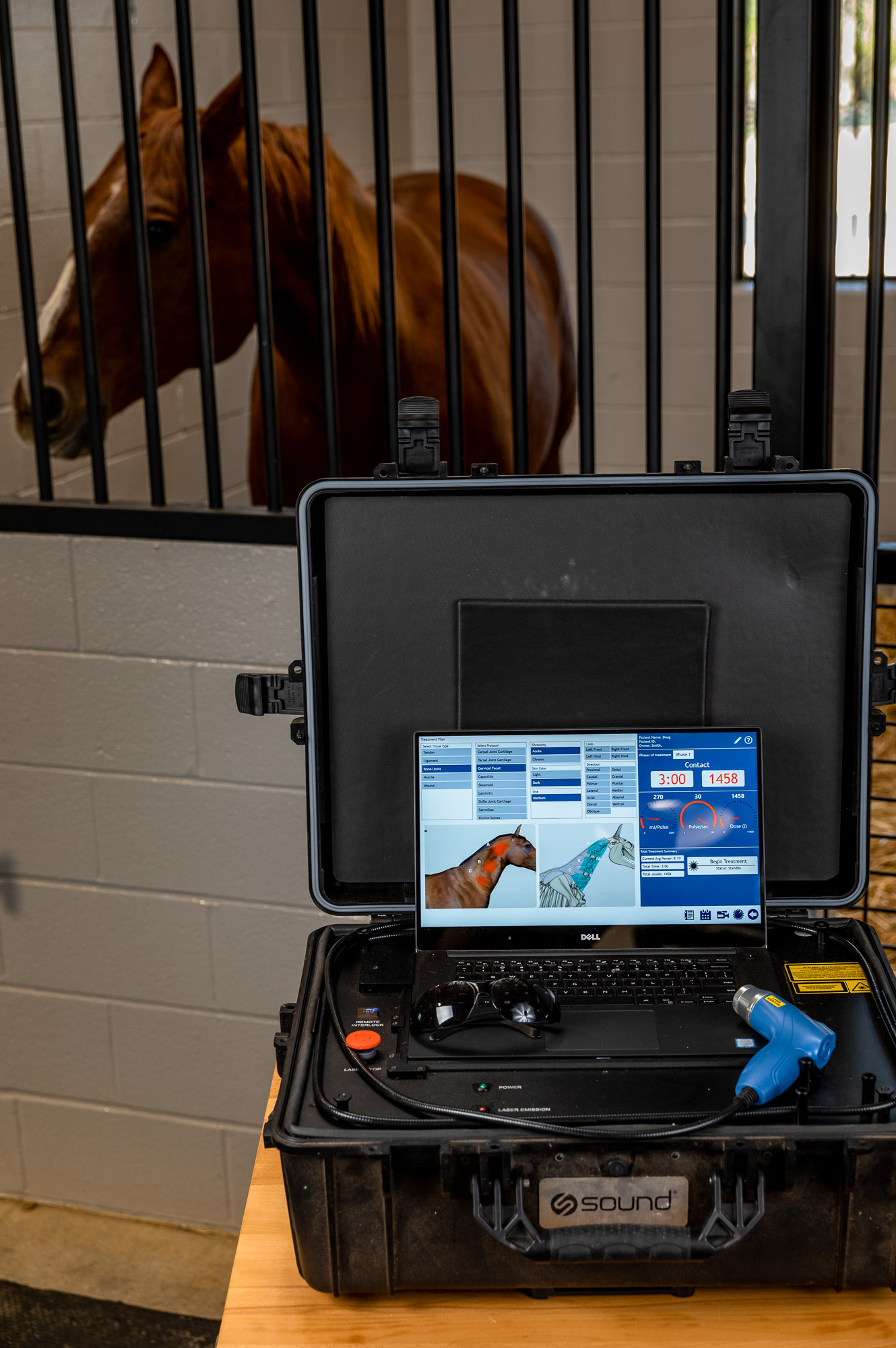Equine Therapy: Exactly How It Aids Build Self-confidence and Psychological Stamina
Equine Therapy: Exactly How It Aids Build Self-confidence and Psychological Stamina
Blog Article
Exactly How Laser Treatment in Horse Therapy Is Reinventing Veterinary Take Care Of Steeds
Laser treatment has emerged as a transformative method in equine vet care, supplying a non-invasive solution that accelerates recovery and enhances total health and wellness. The transportability and flexibility of laser treatment tools even more highlight their expanding indispensability amongst vets.
Understanding Laser Therapy

The technology behind laser treatment is based in the concept of photochemistry, where photons are taken in by chromophores within cells, causing increased ATP manufacturing and inflection of responsive oxygen types (Equine Therapy). This, consequently, advertises cellular expansion, reduces inflammation, and accelerates healing. Veterinary professionals use different sorts of lasers, including low-level lasers (LLLT) and high-power Class IV lasers, depending on the specific healing purposes and the nature of the equine condition being treated
Different laser wavelengths and power setups are meticulously picked to target various cells midsts and accomplish desired clinical outcomes. Safety and security procedures are vital, as incorrect usage can lead to thermal damages or suboptimal healing impacts. Thus, a thorough understanding of laser treatment's systems and applications is vital for its efficient implementation in equine vet method.
Benefits for Horse Health And Wellness
The myriad benefits of laser therapy for equine wellness include boosted healing, discomfort reduction, and improved mobility. This innovative treatment technique leverages specific wavelengths of light to penetrate cells, stimulating mobile feature and promoting fast cells repair work. The non-invasive nature of laser treatment guarantees very little tension and discomfort for the steed, promoting a smoother healing process.
Improved healing is one of the primary benefits, as laser treatment increases mobile regrowth and collagen synthesis. Discomfort decrease is attained through the anti-inflammatory effects of laser therapy, which decreases swelling and reduces the manufacturing of pain-inducing chemicals.
Enhanced mobility is another essential advantage, especially for efficiency and functioning steeds. By reducing swelling and pain, and enhancing cells repair service, laser treatment assists in recovering joint feature and muscular tissue versatility. The advancing impact of these advantages is not just a quicker return to regular activity but likewise a total enhancement in the equine's quality of life. Hence, laser treatment stands as a transformative device in contemporary equine veterinary treatment.
Typical Problems Dealt With
Laser therapy has emerged as a flexible treatment alternative for a selection of common equine problems. In addition, laser treatment is efficient for problems like osteo arthritis, where it aids reduce joint inflammation and promote tissue repair.
Wound monitoring is another area where laser therapy has actually content shown significant promise. Persistent injuries or slow-healing abscess can be especially difficult in equines, yet laser treatment enhances cellular regeneration and boosts blood flow, therefore speeding up the recovery process. Laser treatments have actually been efficiently employed in managing hoof problems such as laminitis and abscesses, alleviating discomfort and advertising much faster healing.

Modern Technology Behind Laser Treatment
Beyond the myriad conditions treatable with laser therapy, the innovation itself qualities more detailed assessment. At the heart of laser therapy is the use of particular wavelengths of light to penetrate cells and generate organic actions. These wavelengths, usually ranging from 600 to 1000 nanometers, are selectively soaked up by chromophores in the skin, muscle mass, and other cells, instigating a waterfall of cellular events.
Laser devices made use of in veterinary medicine usually make use of low-level laser treatment (LLLT) or chilly laser therapy. Unlike high-powered medical lasers, these gadgets run at reduced energy degrees, enhancing therapeutic advantages while lessening thermal damage. The power from the laser light promotes adenosine triphosphate (ATP) production, boosts cellular metabolic rate, and speeds up tissue repair service processes.

Success Stories and Instance Studies

Showcasing the substantial benefits of laser therapy, various success stories and situation research studies illuminate its transformative effect on equine health and wellness. One such situation includes a purebred racehorse suffering from chronic tendonitis. Conventional treatments yielded minimal improvement, but after integrating laser therapy into look at more info the regimen, the steed showed substantial decreases in swelling and pain within weeks, ultimately returning to competitive auto racing.
An additional engaging example features a dressage horse detected with extreme neck and back pain, limiting its performance. A veterinary group used low-level laser therapy (LLLT) to target the inflamed locations, causing marked improvement in flexibility and a notable decline in pain. Over a number of sessions, the horse reclaimed its peak type, showcasing the efficacy of laser treatment in addressing bone and joint problems.
Additionally, a study performed at a leading equine center analyzed 50 horses with different soft cells injuries treated with laser therapy. The results stood out: 85% of the equines demonstrated accelerated healing times and improved flexibility. These situations underscore the convenience and efficiency of laser treatment in equine medicine, supplying a non-invasive, scientifically-backed technique to enhancing recuperation and performance in steeds.
Conclusion
Laser treatment is transforming equine vet care by giving a non-invasive treatment that accelerates healing, lowers inflammation, and alleviates discomfort. With its effectiveness in treating a range of conditions, from musculoskeletal injuries to chronic conditions like osteoarthritis, this technology dramatically enhances equine health and wellness and flexibility. The mobility and flexibility of laser therapy even more emphasize its transformative influence on veterinary methods, strengthening its role as an essential tool in modern-day equine medical care.
Report this page